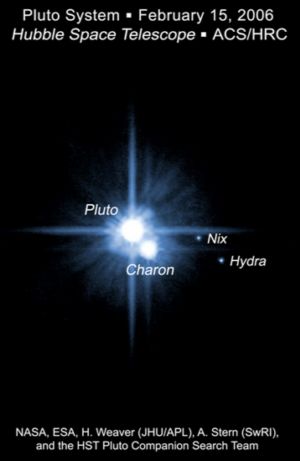With New Horizons now six months out and closer to Jupiter than it is to the Sun, the creatively-acronymed Jupiter Encounter Science Team (JEST) has turned in its observation plan. New Horizons will pick up a gravity assist from the gas giant in February of 2007, on its way to the 2015 encounter with the Pluto system. That also means that from January to June of 2007, the spacecraft will make more than 500 observations on everything from the Galilean satellites to the Jovian magnetosphere, with rich results expected.

If you are tracking New Horizons, check out the mission locator page. Alan Stern’s regular reports are also vital; Stern is principal investigator for the mission and has, throughout planning and launch, used the Web effectively to keep the public informed about its progress. In the latest update, he reports on a rare occultation of a star by Pluto in June. Such events provide the opportunity for studying Pluto’s atmosphere, with the interesting result that conditions have changed since earlier occultations in the 1980s. Back then, Pluto was moving past perihelion and thus about as warm as it ever gets.
Is the atmosphere of this distant world ‘snowing out’, falling to the ground as flakes of frozen gases? Not yet, says Stern, though there is no certainty about what will happen by the time New Horizons arrives. You can read more in Stern’s report, including news of the encounter with asteroid 2002 JF56, which provided reassuring evidence that the spacecraft’s equipment can track and image moving targets. New Horizons passed 2002 JF56 at a relative speed of over 70,000 km/hr.
The equipment in question is the spacecraft’s moving target image motion compensation system, but continuing testing of other onboard systems goes well, including the upload of the latest version of the probe’s autonomy software. Flight software uploads are scheduled for August and September. New Horizons is now in axial spin mode to save fuel and will pass the distance of Ceres from the Sun in July.
Keep an eye on Ceres: NASA’s Dawn mission is still scheduled for orbital insertion around the distant object in 2015, the same year New Horizons reaches Pluto. If all goes well, our knowledge of the Solar System’s ‘dwarf planets’ should soon increase exponentially.


New Horizons is a bold effort, but I often wonder what Voyager I would’ve found if it had been targeted at Pluto – that was one option after Saturn.